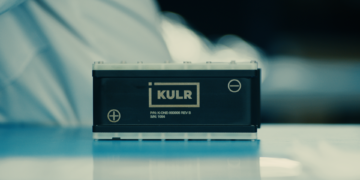Novel treatments show potential in addressing hard-to-treat mutations in lung cancer, bringing hope for improved outcomes
ArriVent Biopharma recently unveiled encouraging results from its Phase 1b trial of firmonertinib, an EGFR tyrosine kinase inhibitor (TKI), in patients with non-small cell lung cancer (NSCLC) harboring rare and complex epidermal growth factor receptor (EGFR) mutations. The data, presented at the World Conference on Lung Cancer (WCLC) in San Diego, highlighted firmonertinib’s efficacy in treating patients with PACC mutations, a subgroup of EGFR mutations known for their resistance to standard therapies.
Background: The Challenge of PACC Mutations in NSCLC
EGFR mutations are common in NSCLC patients, and TKIs like osimertinib and afatinib have become standard treatments. However, PACC (P-Loop and αC-helix compressing) mutations, which include G719X and S768I, account for about 60% of the uncommon or non-classical EGFR mutations. These mutations present a significant treatment challenge, as they are often less responsive to standard TKIs, necessitating more effective targeted therapies.
Firmonertinib, currently approved in China for classical EGFR mutations based on the FURLONG trial, is now being evaluated for its potential to treat patients with these rare mutations. The WCLC presentation highlighted data from a study of firmonertinib in NSCLC patients with PACC mutations, revealing promising response rates and disease control.
Key Findings from the Firmonertinib Phase 1b Trial
In this prospective Phase 1b study, firmonertinib was tested at two doses—160 mg and 240 mg daily—in patients with PACC EGFR mutations. The study included both first-line (1L) and second-line (2L) patients, offering insights into the drug’s efficacy in different treatment settings.
At the 240 mg dose, firmonertinib achieved an objective response rate (ORR) of 63.6% (14 out of 22 patients) as confirmed by blinded independent central review (BICR). Additionally, four more patients showed unconfirmed responses. At the 160 mg dose, the ORR was lower at 34.8% (8 out of 25 patients), with five additional unconfirmed responses. Impressively, the disease control rate (DCR) was 100% at the 240 mg dose and 91.3% at the 160 mg dose.
One notable finding was firmonertinib’s ability to control brain metastases, a common complication in NSCLC. In patients with stable brain metastases, 46% (6 out of 13) showed responses at both dose levels. These early results suggest that firmonertinib could be a valuable treatment option for patients with difficult-to-treat PACC mutations, particularly those with central nervous system involvement.
Safety Profile and Future Prospects
The safety profile of firmonertinib in the trial appeared consistent with previous studies. Grade 3 adverse events included diarrhea (10%), liver enzyme elevations (7%), and rash (3%). All-grade side effects were more common, with diarrhea affecting 66% of patients and liver enzyme elevations occurring in 34%. Despite these side effects, firmonertinib’s safety was considered manageable, and the drug’s ability to maintain a favorable benefit-risk ratio holds promise for its future use in this patient population.
ArriVent Biopharma plans to present updated firmonertinib data later in 2024 and is exploring potential regulatory approval for the drug in patients with PACC mutations, pending further data on the durability of response. These additional insights will be crucial in determining firmonertinib’s place in the evolving landscape of EGFR-targeted therapies for NSCLC.
Firmonertinib vs. Afatinib: The Quest for Durability
While firmonertinib’s early results are promising, questions remain regarding its long-term efficacy, particularly in comparison to afatinib, a TKI already approved for certain PACC mutations. Afatinib has demonstrated ORRs ranging from 47.8% to 72.3% in patients with single PACC mutations, and even higher rates of 63% to 77% in those with compound mutations.
The firmonertinib trial included a significant number of patients with compound mutations (12 out of 22 patients treated at 240 mg). In a recent Japanese-focused Phase 3 study, patients with compound mutations showed significantly longer progression-free survival (PFS) than those with single PACC mutations. This suggests that firmonertinib could offer a competitive advantage, but more data is needed to confirm its durability in comparison to afatinib.
Looking Ahead: BDTX-1535 as a Broad-Spectrum EGFR Inhibitor
In addition to firmonertinib, the field of EGFR-targeted therapies continues to advance with new treatments like BDTX-1535. This next-generation inhibitor is designed to target both classical and non-classical EGFR mutations, offering hope for a wider range of patients. BDTX-1535 has shown promise in preclinical studies and early-phase trials, with durable responses in patients with complex mutations and resistance to osimertinib.
As data from ongoing trials mature, the potential for firmonertinib and other novel therapies to improve outcomes for NSCLC patients with rare EGFR mutations looks increasingly promising. These advances bring hope for more personalized and effective treatment options in the fight against lung cancer.
You might like this article:Summit Therapeutics Announces Promising Phase III Trial Results for Ivonescimab in Lung Cancer











